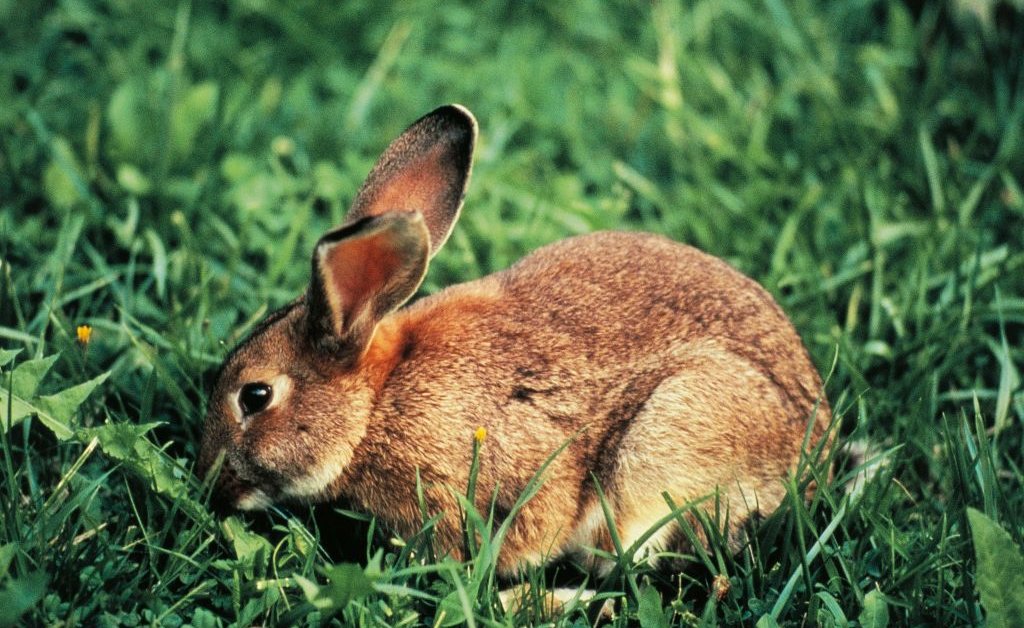
Few domesticated animals have flourished as well as rabbits have when reintroduced into the wild—a phenomenon that has often had economic and ecological consequences. And now a team of researchers has figured out why rabbits have had such success readapting to nature.
In a study published in the journal Nature Ecology & Evolution on June 21, researchers worked to determine what factors make the furry critters such masterful colonizers of countries around the world.
[time-brightcove not-tgx=”true”]Generally, it’s difficult for a domestic animal to survive in the wild, according to a press release about the study from Sweden’s Uppsala University, where one of the study’s senior authors, Leif Andersson, works. Domestic animals that do survive in the wild are called “ferals”—common examples include feral pigs and feral cats. For years, scientists have tried to understand what allowed domestic animals, like rabbits, to thrive in the wild. A previous study on the rabbit colonization of Australia found that Englishman Thomas Austin introducing 24 rabbits in 1859 caused a spike in the rabbit population that led to an ecological and economic “catastrophe,” Smithsonian Magazine reported.
To better understand the genetic changes that allow European rabbits to survive in the wild, researchers of the new study sequenced the genomes of 297 rabbits—including six feral populations from Europe, South America, and Oceania—as well as domestic and wild rabbits from the native range in Southwest Europe. This is the largest genetic dataset of rabbits ever created, according to Uppsala University.
“Domestic rabbits are so common, that our initial expectation was that these feral populations would be composed of domestic rabbits that somehow managed to re-adapt to the wild, but our findings point to a more complex scenario,” Miguel Carneiro, one of the senior authors of the study, said in the press release. “Despite looking at six largely independent colonizations, all these feral rabbits share a mixed domestic and wild origin.”
Read More: Australia Has a Serious Cat Problem
The study found that as rabbits readapted to the wild, genetic variants that are associated with domestication were often eliminated, according to the press release. That’s because the genetic traits linked to domestication often made the animals more vulnerable to predators. For instance, albino or fully black rabbits are less likely to be seen in the wild, even if those coat colors are common in domestic rabbits, researchers said in the press release.
The study also found evidence to suggest that natural selection affected genes that are tied to behavior and the development of the nervous system, the press release said.
“Tameness is crucial for domestic animals to live close to humans, but it will not help a rabbit that finds itself back in the wild survive, so natural selection removes the genetic variants linked to tameness,” Pedro Andrade, lead author of the study, said in the press release.
Researchers said in the study that their findings offer “important insights for the mitigation and management of invasive populations.” Feral rabbits can be invasive pests and cause hundreds of millions of dollars in damages, according to Uppsala University.
Earlier this year in Paris, about 300 wild rabbits populated the lawns of the Esplanade des Invalides, the historic site of Napoleon’s Tomb. The rabbits dug tunnels underneath the lawn, as well as gnawed on electrical cables and pipes on the grounds. Officials estimated that repairing the damage could cost about €366,000 (or about $391,000 USD), France24 reported. In Vancouver, invasive European rabbits have inhabited some city parks, prompting city officials to warn the public not to handle or feed the animals.
Get alerts on the biggest breaking news stories here




























